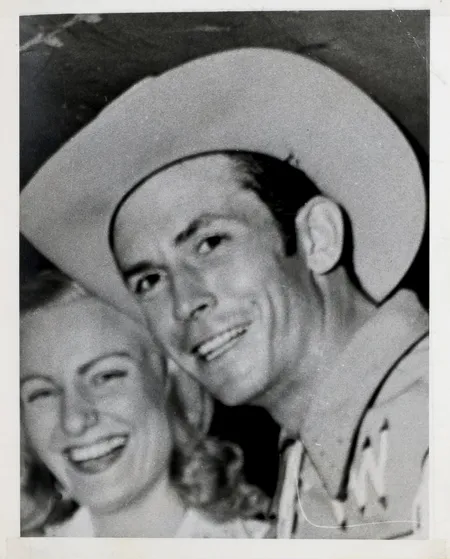Videos by American Songwriter
Almost as though he knew his time in this world would be short, Hank Williams developed a habit of constantly jotting down ideas on napkins, receipts, hotel stationery, and any other scrap of paper that would take ink. While his personal life may have been in shambles – fraught with alcoholic benders and violent fights with his wife, Audrey – he kept track of these lyrical fragments meticulously, piecing them together and writing out completed songs and verses in a series of notebooks he carried around in a worn leather satchel. “He had amazing handwriting, especially for a songwriter,” says Michael McCall, a historian at the Country Music Hall of Fame and Museum in Nashville. “He’d write out his songs in a very formal way, and even dated them. So you can tell when they were done.”
When Hank died on New Year’s Day 1953, en route to a show in Canton, Ohio, he left nearly seventy songs written down in those notebooks, some completely finished and others consisting of only a verse or two, but none of them set to music or recorded to tape. Perhaps he had the melodies in his head, or perhaps he knew he could work them out with his producer, Fred Rose, in the studio. But even in this form, they are intrinsically Hank songs, with a lovely plainspoken poetry and dignified heartache that was his signature. Who knows which of them might have been as big a hit for him as “Cold, Cold Heart” or “I Saw The Light” or “I’m So Lonesome I Could Cry,” had he lived long enough to sing them.
Nearly sixty years after his untimely death, a dozen of these songs have finally been finished and recorded for The Lost Notebooks Of Hank Williams, which features Alan Jackson, Patty Loveless, Jack White, Norah Jones, Jakob Dylan, and Hank’s granddaughter Holly Williams, among others. First conceived as a covers album for Bob Dylan (who is releasing the album through his own Egyptian Records), The Lost Notebooks originated in the mid-2000s with producer Mary Martin, who also helmed the Grammy-winning 2001 Hank tribute album Timeless. Not only are all of the artists avowed fans of Hank and his music, but they are distinctive songwriters in their own right, a fact that had a crucial impact on the outcome of the project. “The songs needed to be arranged and set to music,” explains McCall, who wrote liner notes. “But many of them needed to be completed. They might need a bridge or bits of work done here or there.”
Holly Williams, for instance, added two new verses to the aching “Blue Is My Heart,” which features backing vocals by her father, Hank Jr. “It was probably one of the shorter ones in the stack, but that song just spoke to me lyrically,” she says. “Pretty much all I had in my hands was eight lines, no music or any other lyrics – just a little thought, if you will. It’s very intimidating finishing a lyric of Hank’s. He had such a simple, cut-to-your-heart style, with no extra words. He wrote the first two verses and I wrote the last two. My hope is that you won’t be able to tell the difference between Hank’s lyrics and mine.”
In the studio, Holly emphasized a rough-and-tumble style that would match the spirit of her grandfather’s recordings, if not exactly their sound. Working with a very small band that included Vince Gill on guitar, she “cut it in one take, really live and broken down,” she says. “I didn’t want to put in too many vocals or overdubs or anything like that. I really wanted to keep the production simple.”
Lucinda Williams (no relation) by contrast arranged and recorded “I’m So Happy I Found You” exactly as Hank wrote it in his notebooks, without altering or adding a single word. “I didn’t break it up and put a chorus or a bridge in there,” she explains. “Maybe I should have done that. It’s got an awful lot of verses, but some of Hank’s songs are like that. It jumped out at me because it was so unusual for his songs not to be about heartbreak. I’m not crying because I’m blue, I’m crying because I’m so happy – I don’t think I’ve ever seen a line like that in any of his songs.”
Lucinda’s arrangement is simple and spare, featuring only her voice and a simple guitar line – the better to convey the joy of companionship and romantic security. Although it was recorded in the mid 2000s, the song made its way into her setlist and even soundtracked a very special occasion. “I sang it at my wedding when Tom [Overby] and I got married at First Avenue in Minneapolis,” she recalls. “I came out and did a couple of songs, and I thought that one would fit the occasion.”



4 Comments
Leave a Reply